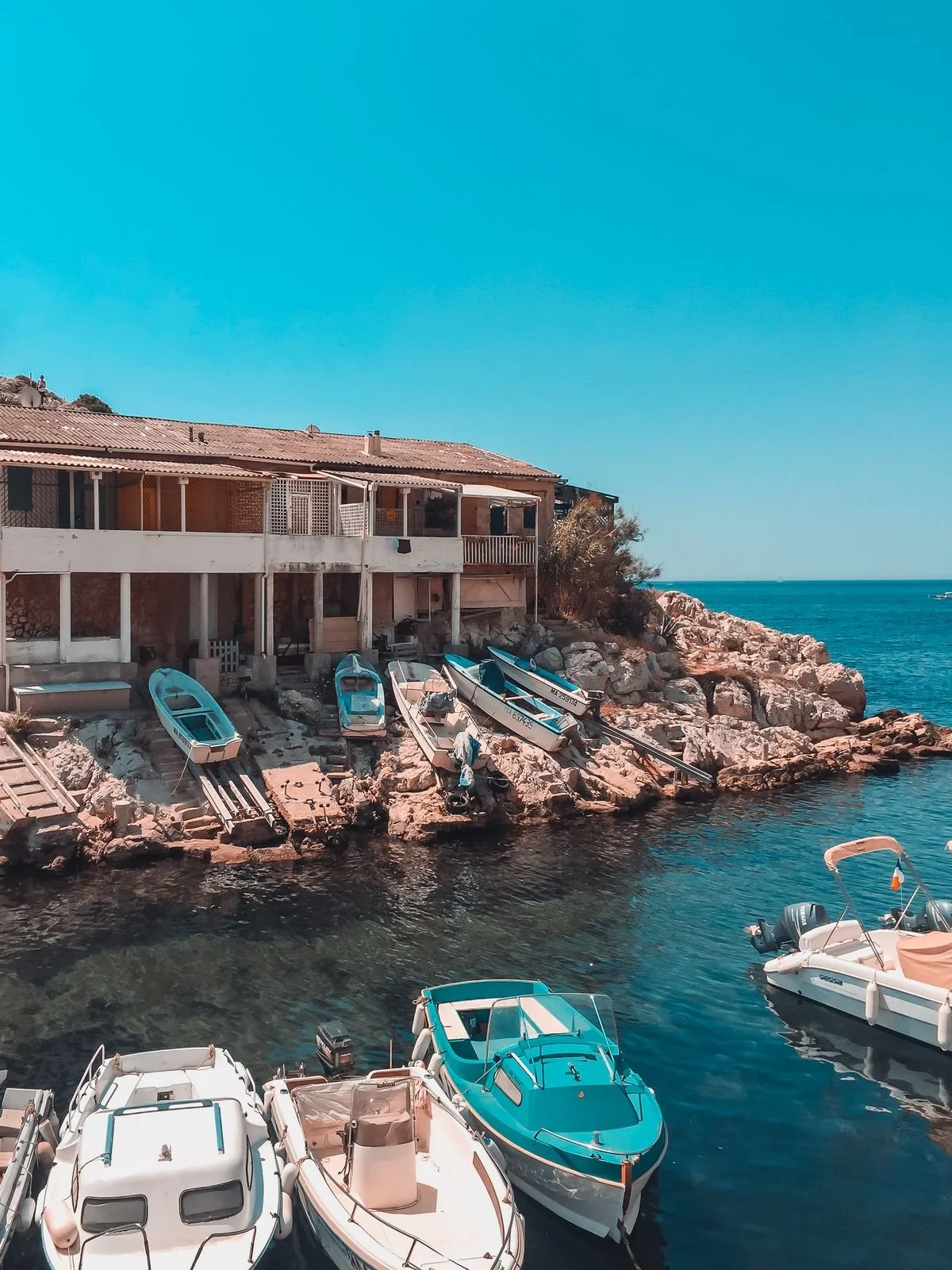Shooting in Marseille
Where Mediterranean light meets urban cinema
Marseille is more than France’s southern capital. It’s a raw, visual city that has inspired filmmakers for decades. With direct flights from London and Paris into Marseille Provence Airport, fast access to both coastline and hinterland, and a unique light that wraps every surface in texture, Marseille delivers cinematic truth with production-ready precision.
Marseille: open-air set with cultural edge
The city is a patchwork of styles and stories:
Historic Vieux-Port
Fishing neighborhoods and modernist blocks
Hills, creeks, urban rooftops, Mucem’s bold architecture
From Jean-Pierre Melville to Jacques Audiard, from Netflix series to fragrance films, Marseille has offered its soul to visual storytellers. It works for action, fashion, drama, or branded content.
The Mission Cinéma et Tournages (Aix-Marseille Metropole) supports productions with:
Location sourcing
Local fixer and crew connections
Permitting and admin help
Liaison with city services
The Calanques: cinematic wilderness
The Parc National des Calanques is one of Europe’s most striking landscapes: turquoise coves, white limestone cliffs, Mediterranean pines, and sea-carved caves. It stretches between Marseille, Cassis, and La Ciotat.
Filmmakers from Fantômas to Luc Besson have shot here. The setting works equally for high-drama or dreamlike quiet. The park’s team provides support to navigate protected status, technical access, and environmental protocol.
Cassis: sunlit elegance
Just east of Marseille, Cassis is all clean lines and Provence charm: vineyard hills, a bright fishing port, ochre facades, and coastal cliffs.
From Naïs to Transporter 3, it’s a trusted film set. The city is used to hosting productions, and helps coordinate locations and logistics.
The Côte Bleue: hidden Mediterranean
This less-traveled coastal strip between Marseille and Martigues offers intimate calanques, small ports, and old stone villages. For scenes of seaside life, retreat, or movement by train or car, it offers a less obvious alternative with cinematic potential.
Martigues: the "Venice" of Provence
Known as the "Petite Venise", Martigues is laced with canals, pastel houses, arched bridges, and waterfront paths. Ideal for romantic frames, fashion shots, or stylized commercial sequences.
The city hosts a Film Office, assisting with permits and site access.
Production Services & Rentals
Marseille hosts a rich ecosystem of suppliers, from grip trucks to sea shoots:
CompanySpecialtiesLocationTSF MarseilleLighting, grip, vehicles, regie, stills supportPôle Média Belle de MaiHomestudioVideo, audio, light, accessories, field kitsMarseilleTranspaluxGrip, generators, accessoriesPACA Region (via TSF)PanavisionCamera systems, optics, delivery in MarseilleServiced from ParisAmicalFull AV equipment, lighting, gripMarseilleFotoprodPhoto and video gearMarseilleJMC Film ServicesTrailers, security, transport, base camp equipmentPACA RegionCarlogeLoges, tech vehicles, mobile unitsMarseille & SurroundingsSunsetCamFull gear park: video, light, grip, accessoriesMarseilleStarlight EventsAV gear, camera, lenses, monitors, audioMarseilleONEWAYCamera, streaming, light, remote workflowActive across PACA
Logistics & Support
The Mission Cinéma acts as the central hub for all projects. They offer:
Support from early prep
Location introductions (public + private)
Tech scouts and access management
Permit delivery and city liaison
Local vendor and crew recommendations
Average permit turnaround: 15 working days.
They work closely with Film France and the CNC to align national-level support.
Why shoot in Marseille?
Vast visual range: from raw urbanity to untouched nature
Proven host of major films, commercials, and series
Mediterranean light, year-round
Deep network of local technicians and service vendors
Sea access and aerial flexibility
Direct flights from London and Paris (Marseille Provence Airport)
Conclusion
Marseille isn’t only visual — it’s visceral. It gives producers texture, movement, contrast, and scope.
From the cliffs of the Calanques to the backstreets of the Panier district, it offers unmatched narrative potential. Add proximity to Cassis, Martigues, and the Côte Bleue, and the region becomes a self-contained production world.
With the right team, the right prep, and the right permissions, Marseille becomes not just a location, but a collaborator.

